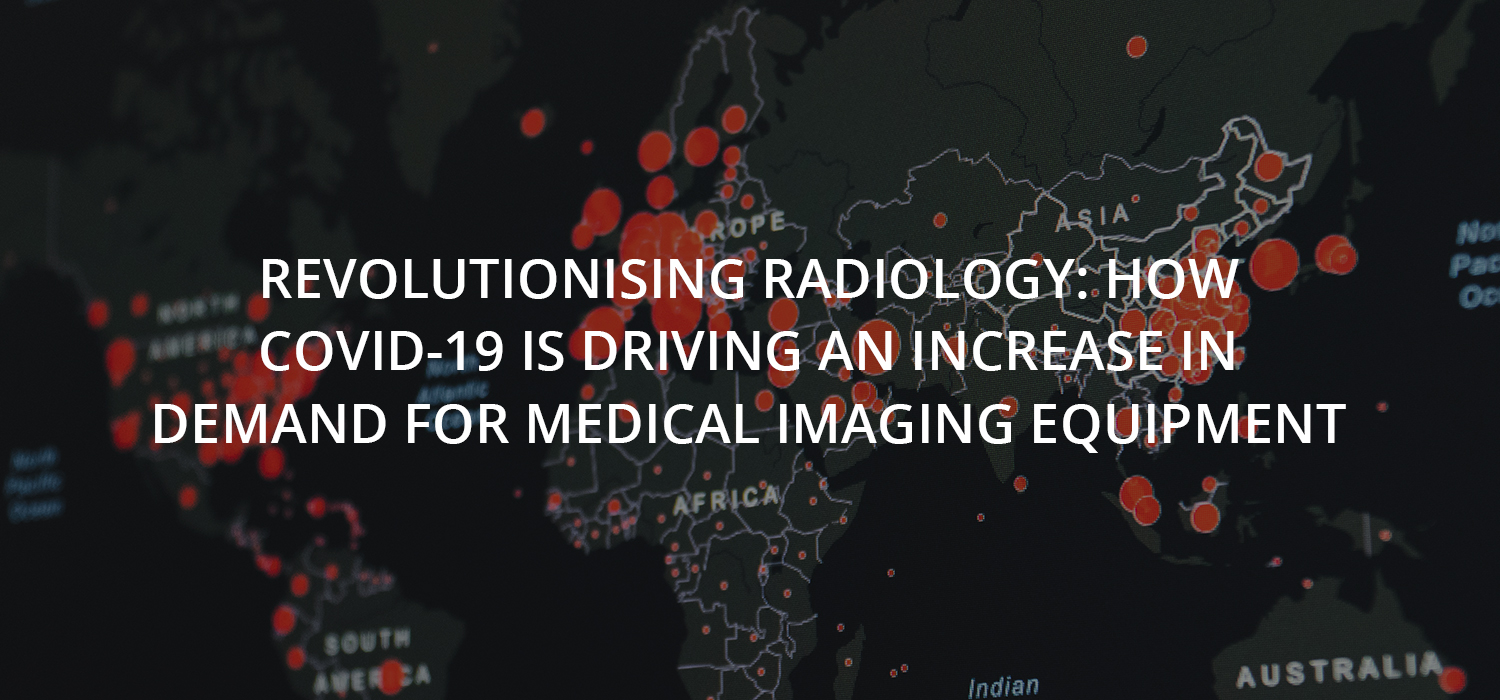

The COVID-19 pandemic has profoundly impacted the medical industry, with the demand for medical equipment and supplies skyrocketing in response to the crisis. One area that has seen significant growth is radiology, with hospitals and clinics worldwide increasing their reliance on medical imaging technology to diagnose and treat patients. In this blog, we'll explore how COVID-19 drives increased demand for medical imaging equipment and how radiology is being revolutionized in response to the pandemic.
The Importance of Medical Imaging in the COVID-19 Era
Medical imaging has always been essential in diagnosing and treating various medical conditions, from broken bones to cancer. However, the COVID-19 pandemic has highlighted just how crucial these technologies are to our ability to respond to public health emergencies. One of the key features of the virus is its ability to cause damage to the lungs, leading to severe respiratory symptoms and, in some cases, acute respiratory distress syndrome (ARDS). Medical imaging technologies such as X-rays, CT scans, and ultrasounds are invaluable in diagnosing and monitoring these conditions, allowing healthcare providers to make informed decisions about patient care.
In addition to their diagnostic capabilities, medical imaging technologies are critical in managing the pandemic. For example, X-rays and CT scans can help healthcare providers identify which patients require hospitalization, allowing for the efficient allocation of resources and personnel. Medical imaging can also be used to monitor patients recovering from COVID-19, providing valuable insights into the progression of the disease and the effectiveness of various treatments.
The Growing Demand for Medical Imaging Equipment
The increased reliance on medical imaging technology during the COVID-19 pandemic has increased demand for these products. According to a report from Grand View Research, the global medical imaging equipment market is expected to reach $44.07 billion by 2027, with a compound annual growth rate (CAGR) of 5.3% from 2020 to 2027.
One of the primary drivers of this growth is the need for advanced medical imaging equipment to provide detailed, high-resolution images of the lungs. Many medical imaging companies have begun developing new technologies specifically designed for COVID-19 diagnosis and monitoring in response to this demand. For example, Canon Medical Systems recently launched a new software package that can quickly and accurately diagnose COVID-19 pneumonia using CT scans.
Another factor driving demand is more portable and compact imaging equipment. As COVID-19 has spread worldwide, many healthcare providers have had to set up field hospitals and makeshift clinics to accommodate the influx of patients. Portable and handheld X-ray machines, ultrasounds, and other medical imaging equipment can be critical in these settings, allowing quick and efficient diagnosis and treatment.
Revolutionising Radiology in Response to COVID-19
The surge in demand for medical imaging equipment has also led to a revolution in radiology, with many companies developing new technologies and solutions to meet the unique challenges of the COVID-19 pandemic. One area of innovation is using artificial intelligence (AI) and machine learning to improve the accuracy and speed of medical imaging.
Other companies are focusing on developing new imaging technologies that can provide even more detailed and accurate images of the lungs. For example, GE Healthcare recently launched a new CT scanner that uses photon-counting technology to provide clearer images of the lungs, allowing healthcare providers to more easily detect subtle changes that could indicate COVID-19 or other respiratory conditions. The new technology has already been used in several clinical trials, and the results have been promising.
Another radiology innovation area is the development of new software tools that can help healthcare providers more efficiently manage and interpret medical imaging data.
The COVID-19 pandemic has also highlighted the importance of telemedicine and remote healthcare delivery. Many healthcare providers are turning to virtual consultations and remote patient monitoring to reduce the risk of infection and maintain social distancing protocols. Medical imaging technologies are a critical component of these telemedicine solutions, allowing healthcare providers to diagnose and monitor patients with high accuracy remotely.
In conclusion, the COVID-19 pandemic has led to a significant increase in demand for medical imaging equipment. As a result, the radiology industry is rising to the challenge with innovative new technologies and solutions. As we continue to navigate this global health crisis, medical imaging technology will play a critical role in our ability to diagnose and treat patients with COVID-19 and other medical conditions. As a result, the future of radiology looks bright, and we can expect continued innovation and growth in this essential field in the years to come. Visit https://edusofthealth.com/ to learn more about how the medical imaging industry has evolved and to explore the range of services we offer to help leverage this technology.
